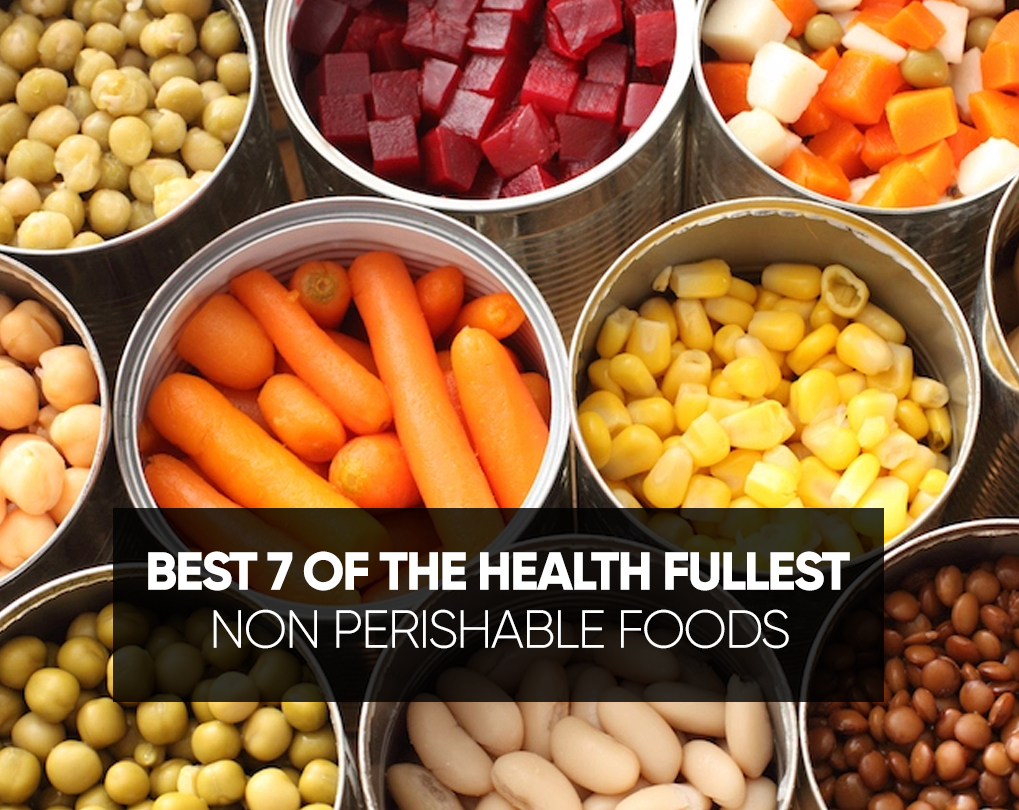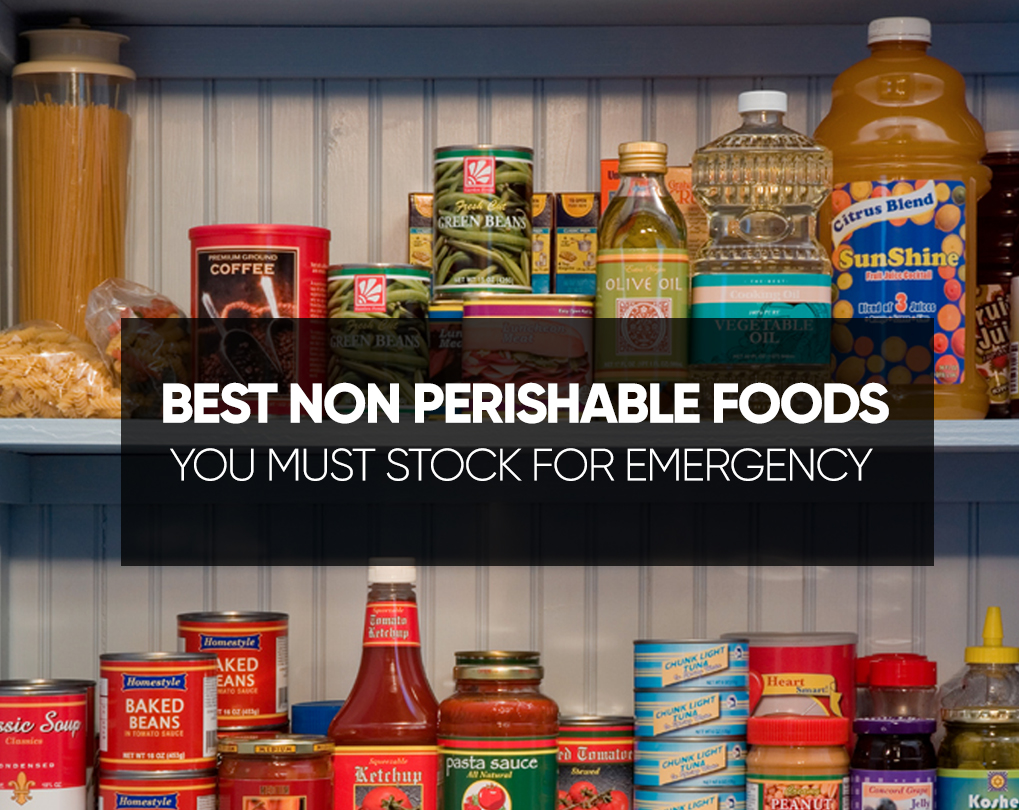Table of Contents
Non perishable foods, also identified as “shelf-stable” foods, are things that can be securely saved at room temperature, according to the US Department of Agriculture (USDA). For perishable foods like vegetables to become non-perishable, they require to be drained or healed by flame to finish any foodborne germs that could start to spoilage or create disease.
Then, this food can be packaged in dry, sealed vessels such as cans. It’s meriting noting that the safety of these things is critical, whole foods will ultimately destroy if they have not been correctly preserved. No concern where you live, what your financial status looks like, or how secure you think your home is, it never damages to stock up on all the things on a primary list of non-perishable foods.

Best 7 of the Health Fullest Non Perishable Foods
Nut Butters
Nut butter is creamy, nutrient-solid, and pleasant. Although warehouse temperatures can influence shelf living, industrial peanut butter lasts for up to nine months at room temperature. Natural peanut butter, which does not carry prophylaxes, remains up to 3 months at 50℉ (10℃) and just one month at 77℉ (25℃).
According to the US Department of Agriculture (USDA), almond butter lasts for up to one year at room temperature while cashew butter lasts up to three months. Nut butter is a superb origin of healthy protein, fats, vitamins, minerals, and important plant mixtures, including phenolic antioxidants, which are mixtures that guard your body against oxidative strain and injury by unstable molecules called free radicals.
Canned fish and poultry
Although new fish and chicken are crammed with nutrients, they are extremely perishable. All the equal, canned types can be carefully stored without refrigeration for a long duration of up to five years at room temperature.
Tuna and different seafood goods are also traded in lightweight packages identified as counter bags, which are ideal for smaller pantries and backpacking. Seafood in retort bags has a shallow life of up to 18 months. Craven and other pork can be seen in retort containers as well, though you should apply to the packaging for shelf life knowledge.
Grains
Entire grains including rice, oats, and barley have a much lengthier shelf life than other common but perishable carb roots like bread, advancing them a smart option for extended-term food storage. For instance, brown rice can be held at 50–70℉ (10–21℃) for up to three months while farro remains up to six months at room temperature.
Grains can be combined with soups, salads, and casseroles, creating them a varied non-perishable element. Plus, eating entire grains may decrease your risk of heart disease, type-2 diabetes, and specific cancers.
Dried and canned beans
With a large shelf life and great nutrient content, dried and canned beans are bright non-perishable food supplies. Canned beans can be stored at room temperature for two to five years while dehydrated beans can keep ten or more years, depending on the packaging.
In case, research discovers that pinto beans saved up to 30 years were examined edible by 80 percent of people on an emergency food use panel. Beans are an outstanding origin of fiber, plant-based protein, B vitamins, magnesium, manganese, phosphorus, iron, zinc, and copper. What’s more, they match well with maximum foods and deliver hearty profits to grain dishes, soups, and salads.
Dried fruits and vegetables
Although the maximum new fruits and vegetables have a low shelf life, dehydrated produce is deemed non-perishable. When correctly saved, most dehydrated fruit can be carefully stored at room temperature for up to one year, and dehydrated vegetables can be stored about half that time.
You can pick from a mixture of dried vegetables and fruits, taking dried tomatoes, apples, berries, and carrots. You can also apply a dehydrator or oven to make your individual dried vegetables and fruits. Vacuum-sealed packaging can assist stop spoilage
Dried veggies and fruits can be used as a snack or combined to trail mix. Plus, dehydrated veggies can be rehydrated by combining them with soups or stews if fresh produce is not possible.
Cereal
Yes, a few kinds of cereal are not any extra nutritious than a bag of candy. But not every cereal is produced the same and some really do have nutrients that are good for you. For example, Cheerios are obtained from all grains, and they only have one gram of sugar per bowl, and Kashi Honey Puffs have about half your regular suggested servings of whole grains.
Pasta and Sauce
The latest pantry pair. If you hold some kinds of pasta and sauce in your cupboard, then you will forever have a meal ready to go in about 15 minutes. Pasta can get even the pickiest of eaters pleased, and it is so easy to get that you can get your kids included in preparing dinner. Whole grain pasta can have nutritional benefits like fiber, and you can sneak a full serving of vegetables into a well-disguised pasta sauce. It is like the pantry equivalent of a short black dress – always a better choice.
FAQs
[wps_faq style=”classic” question=”Q: Is sugar a non-perishable food?”]A: All varieties of sugar, including brownish sugar, white sugar, and powdered sugar, will last considerably. Sugar can dull over time, but it’s yet harmless to eat if you do not mind the texture.[/wps_faq][wps_faq style=”classic” question=”Q: Are potatoes non-perishable?”]A: Semi-perishable foods combine onions and potatoes. Non-Perishable: Will keep a while if stocked accurately, though they may lose nature over time. Instances of non-perishable foods you may have in your pantry are dried beans, spices, and canned soups.[/wps_faq][wps_faq style=”classic” question=”Q: Should I buy emergency food?”]A: Even though it is doubtful that an emergency would cut off your food rations for 2 weeks, examine managing a supply that will keep that long. You may not require to go out and purchase foods to prepare emergency food stocks. You can apply the dry mixes, canned goods, and other staples on your furniture shelves.[/wps_faq]
Conclusion
Non-perishable foods remain a long time without plundering and are necessary for various conditions. Whether you need to distribute things to charitable organizations, plan for potential emergencies, purchase backpacking-friendly items, or merely stock your cupboard, you can take from an abundance of healthful foods that do not need cooling.

